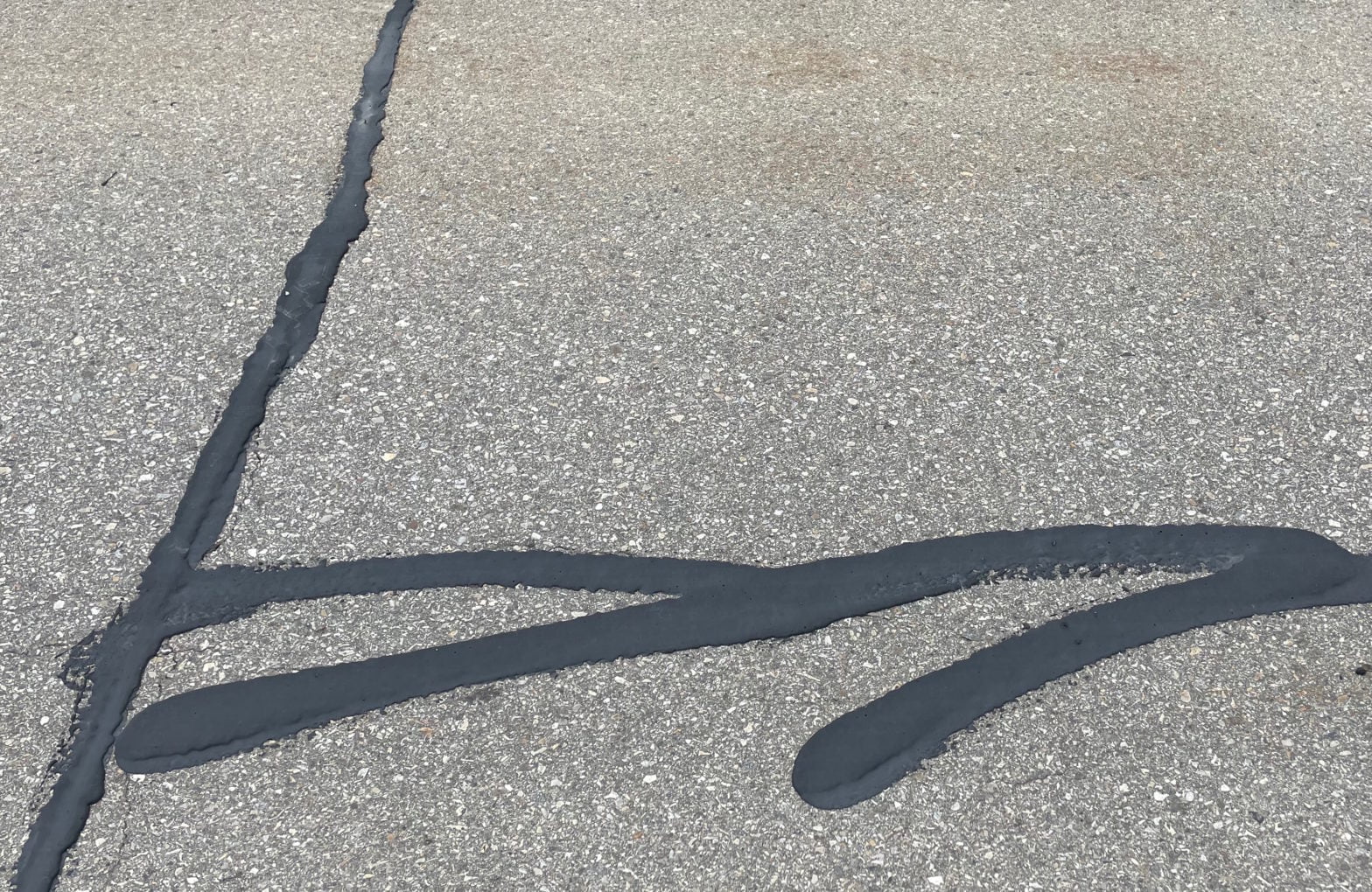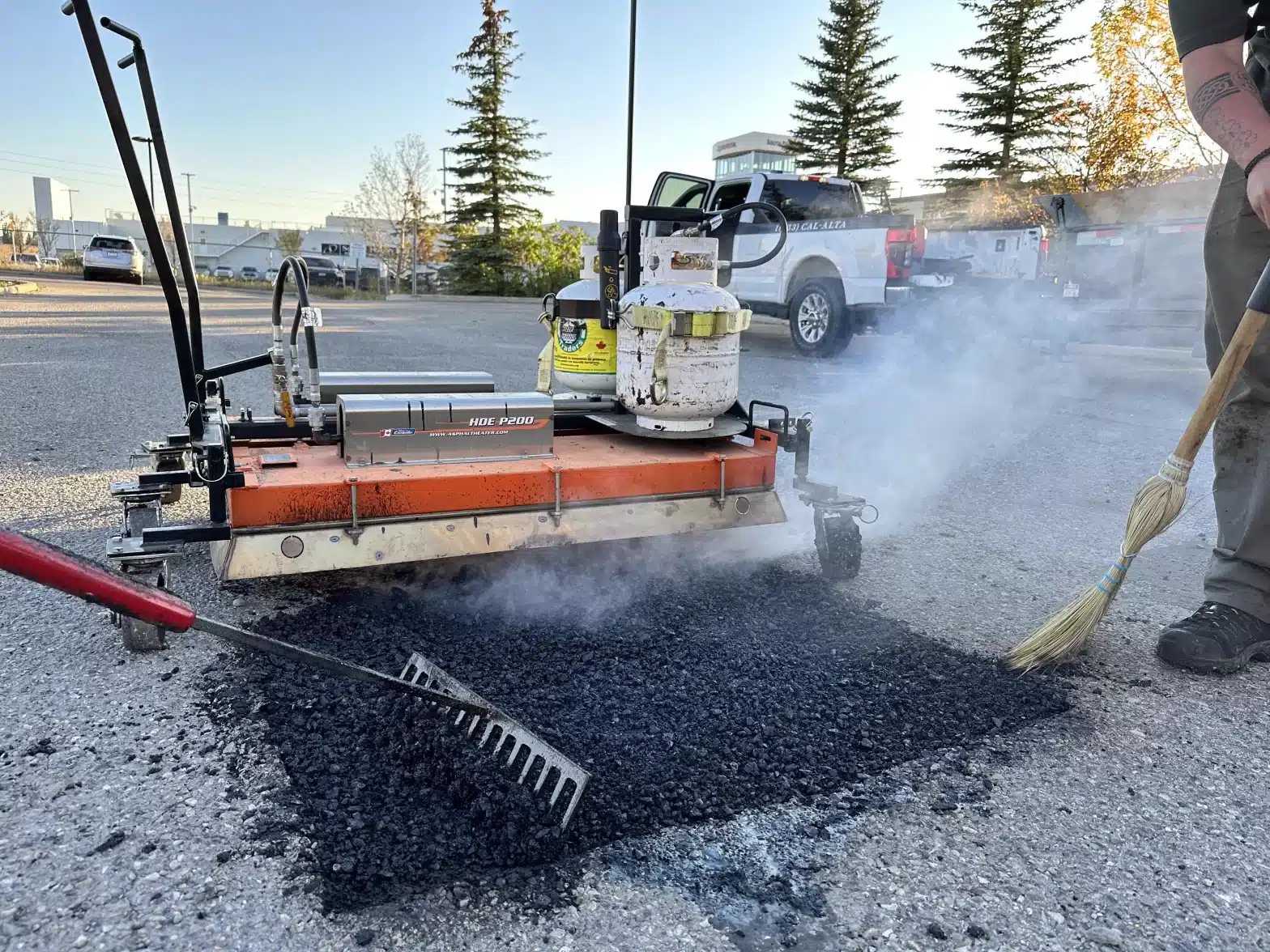
Asphalt cracks are a serious problem. When left untreated, most asphalt cracks will become potholes within a few years as water seeps inside the cracks, expanding when it turns to ice and destroying the asphalt.
There are two different methods for repairing asphalt cracks: Crack sealing, and crack filling. These methods can’t be used interchangeably, and one isn’t better than the other; they’re simply used on different types of cracks. Let’s take a look at the differences between the two, when you should use them, and what kinds of cracks they can be used on.
What Is Asphalt Crack Sealing?
Asphalt crack sealing is the use of a rubberized sealant to remediate cracks in asphalt. Sealant is used for “working cracks”—asphalt cracks that expand and contract over time. The rubber within the sealant allows it to expand and contract with the cracks.
Sealant can be used for cracks that are no bigger than .75” in width and with minimal to no deterioration (no spalling or secondary cracks). Sealant requires more specialized tools than filler; as such, the crack sealing process tends to be more expensive than crack filling.
What Is Asphalt Crack Filling?
Asphalt crack filling repairs cracks, much like crack sealing. The major difference is the substance that’s used; instead of a rubberized sealant, an asphalt emulsion is utilized.
Crack filling can only be used on non-working cracks, as the asphalt emulsion will not expand and contract if the crack does. Crack filling can be used on larger cracks—up to 1” in width—and can be used on cracks that have more significant deterioration, including minor spalling and secondary cracks.
Fewer tools are needed to fill asphalt cracks than to seal them; as such, crack filling tends to be less expensive than crack sealing.
Crack Sealing or Filling: Which One Is the Best Method for Crack Repair?
There is no “best” method of crack repair—it all depends on the type of cracks you’re dealing with. Working cracks should be sealed with sealant, while non-working cracks should be filled with asphalt emulsion. Don’t focus too much on the cost of either repair method—sealant doesn’t always work where filling does, and vice versa. Talk to an asphalt repair professional to get a better idea of which repair method is best for the cracks you’re dealing with.
Can I Crack Seal Over Crack Filler?
You shouldn’t crack seal over previously filled cracks. One of the keys to properly filling or sealing cracks is to ensure they’re well-cleaned before applying sealant or filler; doing so ensures that the sealant or filler will adhere to the asphalt.
Applying sealant over freshly applied asphalt amalgam isn’t a good idea, either. You won’t be getting the best of both worlds; the sealant won’t adhere properly, and you’ll have wasted time and money.
Types of Asphalt Cracks
There are a number of different types of asphalt cracks; each type is typically best treated by either sealing or filling. Here are a few:
Longitudinal cracks
Appearance: These cracks run parallel to the centreline of the pavement; there are many causes of longitudinal cracks.
Typical treatment: Crack filling
Edge cracks
Appearance: These are longitudinal cracks that appear near the edge of the pavement. They’re typically caused by settling.
Typical treatment: Crack filling
Reflection cracks
Appearance: These cracks vary in appearance; they’re caused by cracks in the pavement beneath the overlay. They reflect the cracks below them, giving them their name.
Typical treatment: The pavement beneath the asphalt must be treated; as such, these repairs are typically more involved than simple sealing or filling.
Seam cracks
Appearance: These cracks develop around joints in the pavement, and are caused by mistakes during construction.
Typical treatment: Sealant can be used to fill small seam cracks; should they grow larger, more intensive treatments may be required.
Alligator cracks
Appearance: These interconnected cracks will appear in a patch on your asphalt; they resemble scales, which is how they get their name.
Typical treatment: Crack filling can help remediate alligator cracks; if they grow larger, however, the asphalt may need to be replaced.
No matter what kind of cracks you have in your asphalt, Infinity Asphalt can help. We repair driveways, parking lots, and more. Don’t let cracks in your asphalt develop into a more serious problem! Call us today.

Brent Schuldhaus is the founder and president of Infinity Asphalt. He grew up in Calgary, Alberta, played junior hockey for three years, graduated from the Smith School of Business at Queen’s University in Ontario with a Bachelor of Commerce and went on to found Infinity Asphalt in 2019.

